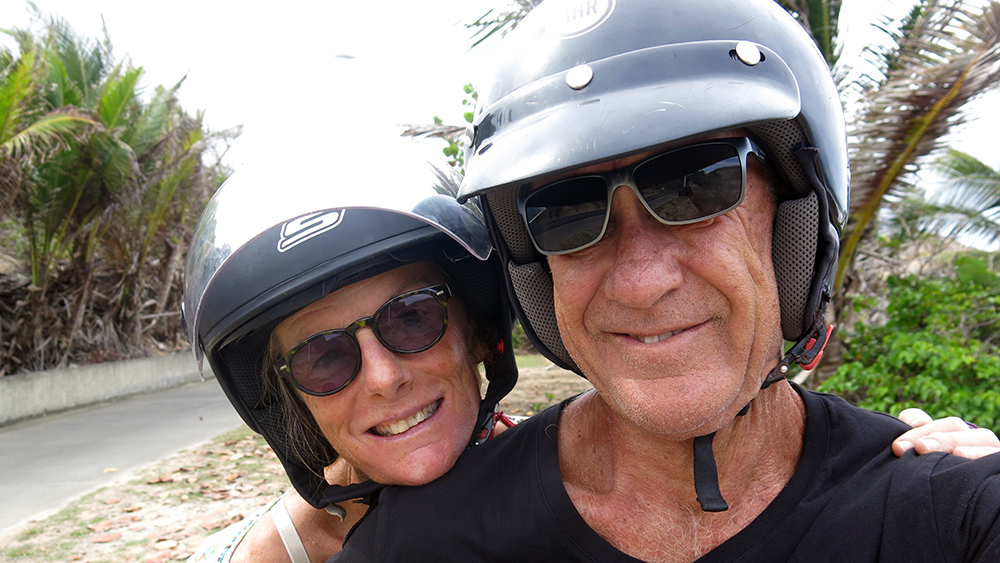
From Dominica we sailed up to Marie Galante, the easternmost island of the Guadeloupe group. The round flat island is nicknamed the Grand Galette (Big Pancake) and unlike many of the Lesser Antilles Marie Galante is not volcanic. For the geologists out there the bright white limestone which makes up most of the island is part of the accretionary prism of sediment scraped off the the subducting North American plate and accumulated on the edge of the overriding Caribbean tectonic plate. It is also the first of the Leeward Islands that we visited (there’s a map below!)

St. Louis is the most popular bay for cruising yachts in Marie Galante, and when we arrived we found our Bretonese friend Denez anchored in the bay. We had met Denez in Grenada during lockdown. He looks like a pirate and plays celtic songs on the guitar, we had spent many happy evenings jamming on the beach or at Nimrods with him. It was good to catch up and the following weekend he organised a gig for the three of us at a local bar.
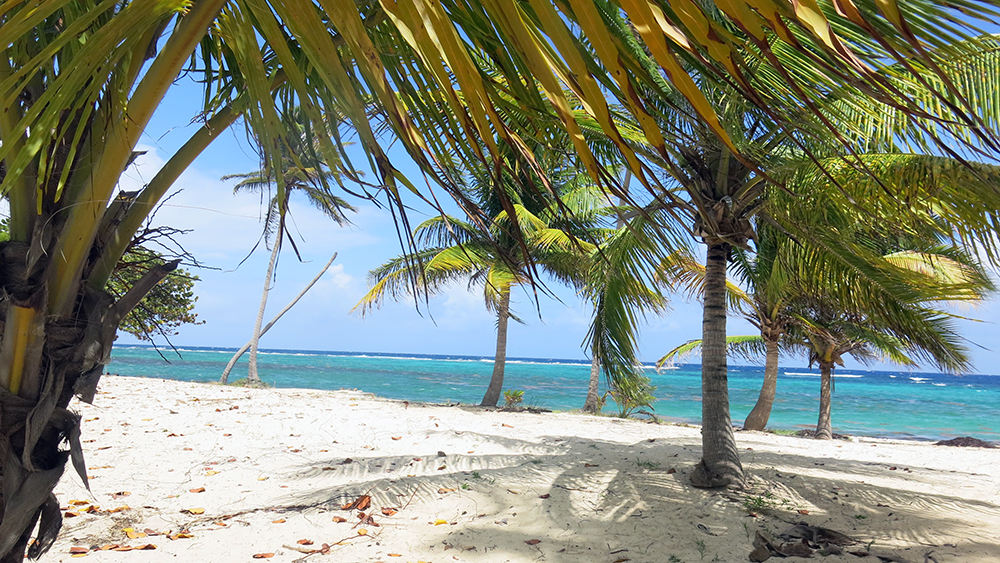
It was a very casual but nonetheless nerve-wracking experience. We practiced ten of our songs and a whole heap of Denez’s, for some of which I was doing backing vocals in French!! On the night everything went pretty well and we were even invited to a party the next day by Florence and Luic. We drove up into the hills spent a lovely evening chatting in the garden (my French seems to be improving a little), eating good food and playing music.
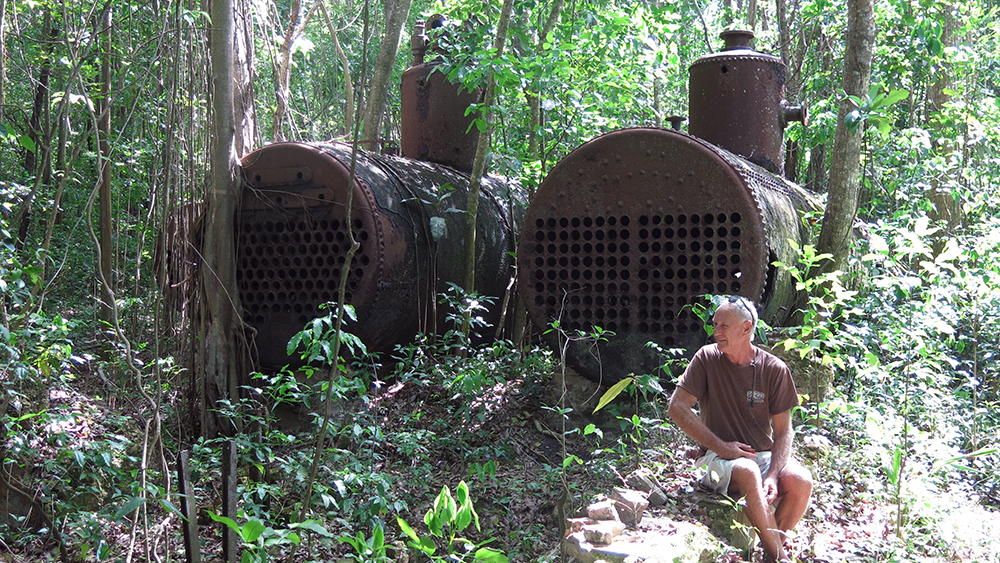
One day we hired a car with Denez to have a look around the island – a tour mainly consisted of rum distilleries and windmills. In times gone by each village milled their own cane for sugar and rum production and the island is scattered with the remains of hundreds of windmills. The Distillerie Poisson is the oldest operating distillery and we enjoyed tasting the Pere Labat rum produced there. However visiting the ruins of the Distillerie Dorot was the most amazing adventure. The crumbling stone walls and cast iron machinery of the old distillery lie deep in the woods in the centre of the island. The old boilers and chimneys, cogs and wheels of the crushing equipment are all buried in the undergrowth and a network of thick tree roots covers the walls.

We had lunch on the south coast at Capesterre at a small restaurant on a beautiful white sand beach. Afterwards we visited the remains of a sugar plantation and refinery at Habitation Murat. The buildings were destroyed by a hurricane in the early 1900s but the plantation house has been restored and now operates as a museum featuring the history of sugar cane production during the colonial period. Looking at the clothing, tools and implements of everryday life on the plantation was fascinating.

After a couple of weeks in Marie Galante we headed over to Guadeloupe – the big island. We anchored at Le Gosier, a small seaside town with a lovely beach and a small island just offshore which is popular with daytrippers. The last ferry leaves at 5pm so after that we had the island to ourselves. We drank some rum punch and played some music with Denez and fed bread crumbs to the muscovy ducks that have live on the island.
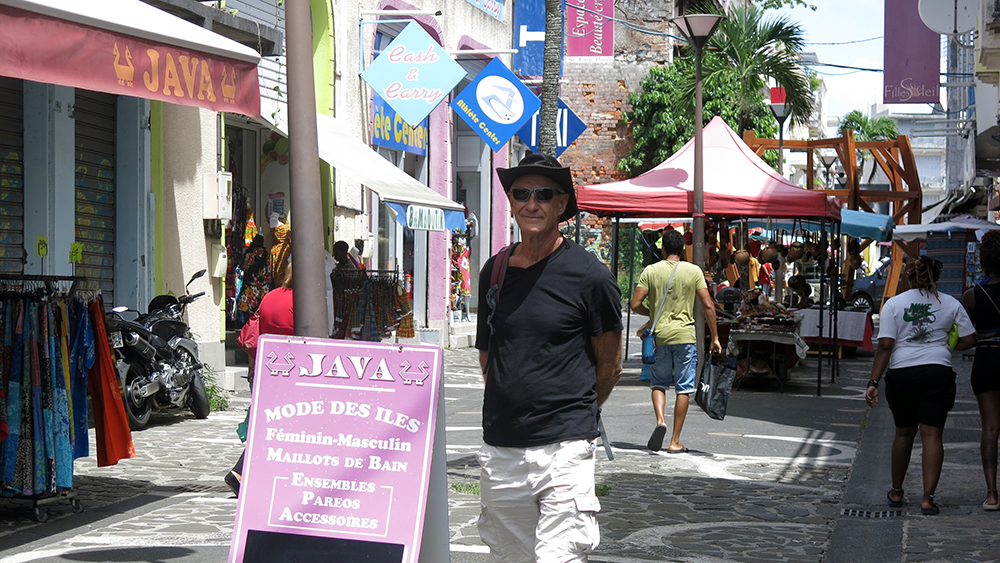
Denez showed us around Jarry, the biggest duty free shopping zone in Europe, and we spent half a day searching for all the hard to find bits and pieces for the boat which we couldn’t get in Grenada. After lunch we visited Pointe a Pitre, the main town on the island, and moseyed around the streets and the markets, there was not much to see.

Our last destination in the Guadeloupe was Isle des Saintes, a small group of islands lying about 20NM south of the big island. Unfortunately we arrived on a holiday weekend so the anchorage was busy but we managed to pick up a mooring in the main bay at Terre de Haut. The first thing we noticed was how beautifully clear the water was and we enjoyed several snorkeling trips amongst boulders, the rock faces decorated with colourful soft corals and dotted with various reef fish.

We rented a scooter for a day and drove around the island, it didn’t take long as it only has about 5km of roads. We explored Fort Napoleon, an extensive and almost impregnable fort on a hill overlooking the bay. The exhibits in the museum give a blow by blow account of the Battle of the Saintes: a British victory over the French that was a significant turning point in the fight for power in the colonial territories of the West Indies.
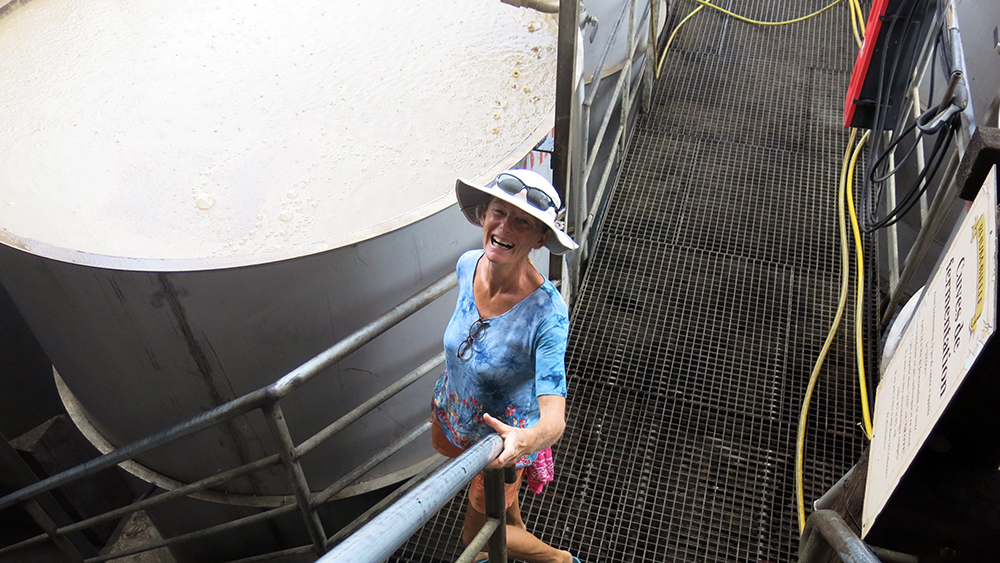
We visited a couple lovely beaches on the west side of the island but those on the east coast are deeply covered in rotting sargasso weed – not somewhere we wanted to linger. The village itself is home to plenty of restaurants and gift shops, it is pretty but quite touristy. We felt that Guadeloupe was less pretentious than Martinique, there seemed to be les with more locals and less Europeans, less tourist resorts and more urban development, and with a number of islands to explore it had more variety for cruising yachts.
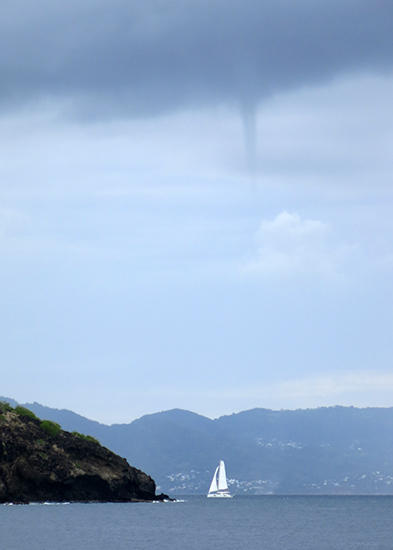
June is the start of the hurricane season and time to start heading south. We have no more time to explore the rest of the island chain but we have really enjoyed the last four months sailing in the Lesser Antilles. After eighteen months being restricted to Grenada it has been wonderful to be cruising again. We are now back in Grenada and happily installed on our mooring in Hog Island.
Hugs from
Neil and Suzy
